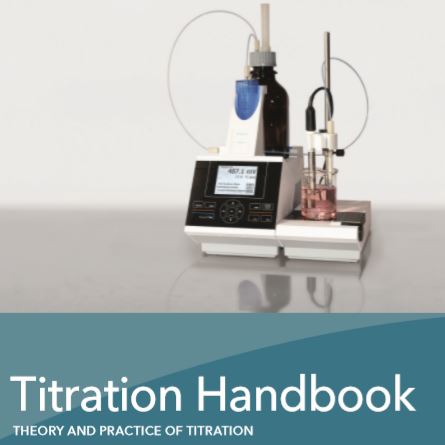Xylem Analytics titration handbook - basics, methods and applications of titration
Titration is one of the oldest methods for content determination in chemistry, still finding broad use in chemical analysis. On the one hand, a titration can be performed very easily and quickly, on the other hand, the titration provides a very accurate measurement result after only a few minutes - under optimal conditions. A relative standard deviation of below one percent is normal. It is not without reason that numerous standards require titration as a method.
In the first step, this guide deals with the volume and its correctness. Thereafter, the focus is on the sample and its handling. Subsequently, the used reagents, electrodes and the titration parameters are dealt with in detail.
Furthermore, application areas are mentioned and various titration methods are presented.
Xylem Analytics titration handbook contents
1. Basics of titration
- Titration reactions, (e.g. acid-base titration, precipitation titration, complexometric titration, redox titration, charge transfer titration, chemical, visual, potentiometric, biamperometric, photometric, conductometric, thermometric titrations).
- Titration types (direct titration, back titration, indirect titration, substitution titration, phase transfer titration).
- Overview of the used methods.
2. Volume measurement devices, manual and automatic titration
- Volume measurement devices in the laboratory.
- Verification of the correct volume.
- Comparison of manual and automatic titration.
3. Sample handling
4. Sensors and reagents
5. Titration parameters and calculations
- Response behavior of the electrode and speed.
- Definition of the titration end.
- Evaluation of the titration.
6. Applications
- Acid-base titrations.
- Argentometric titrations.
- Potentiometric redox titrations.
- … and many others.
7. Photometric titrations
8. Karl Fischer titrations
9. Verification of the titration


